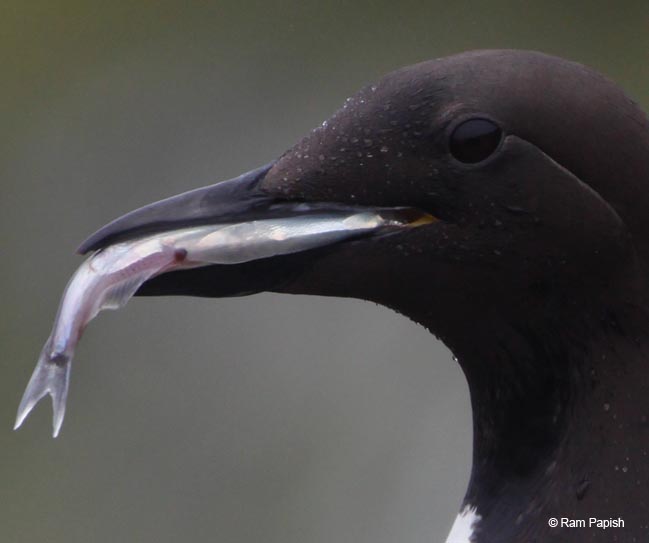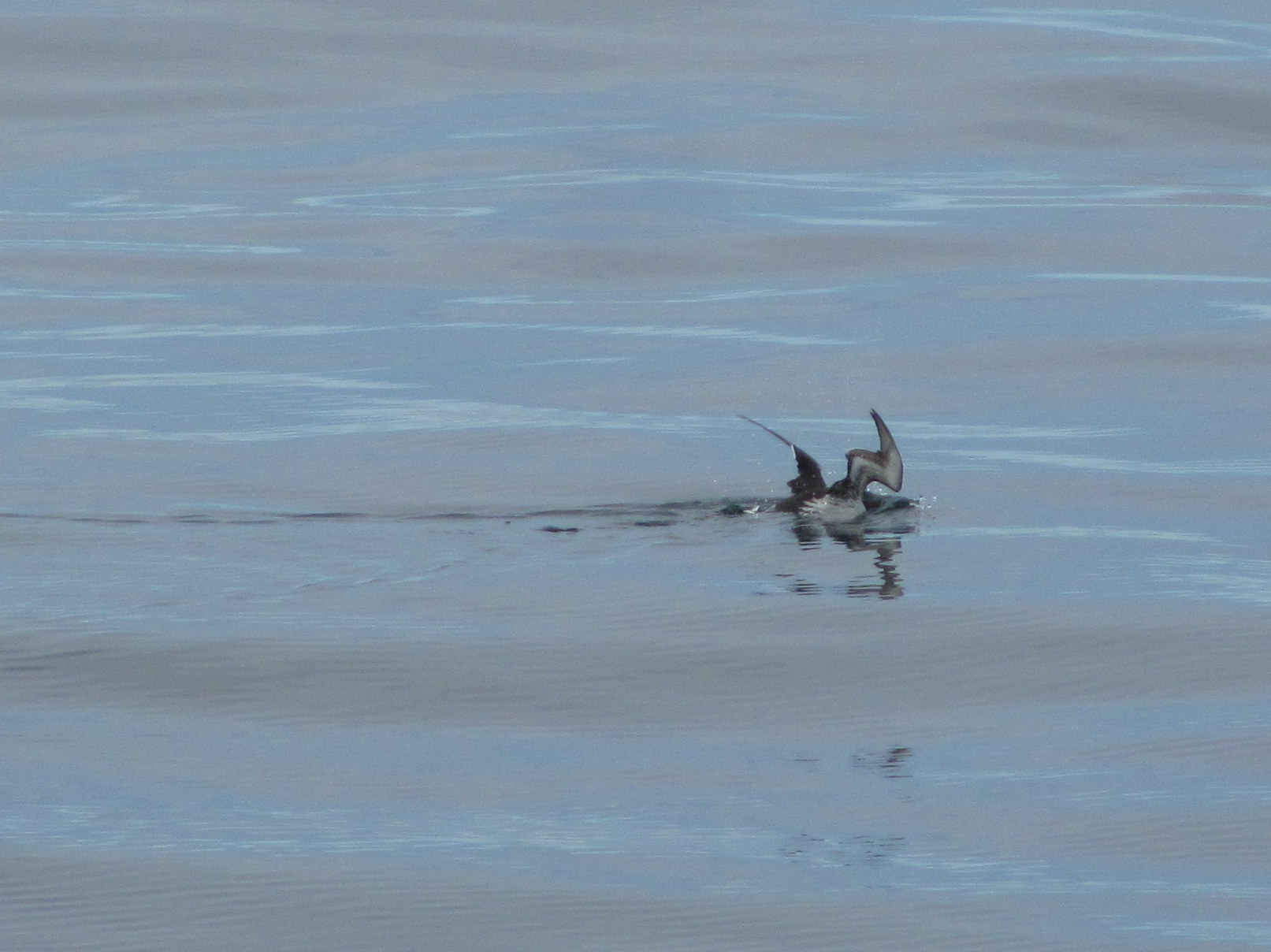Seabirds are Cool
 Despite huge variation among different species, seabirds all share similar characteristics.
Despite huge variation among different species, seabirds all share similar characteristics.
They are all ADAPTED TO LIFE AT SEA.
Seabird Physiology
• Salt Glands. Imagine drinking only sea-water! Seabirds need to a way to get rid of all this salt, and most species have salt glands on their head that concentrate all the salt that the birds take in through their water and food. When lots of salt has built up, it either flows out of the gland (out the nostril), or the bird “sneezes” it out!
• Dense Bones. Many diving seabirds (like penguins) have dense bones to reduce buoyancy when they dive deep for food.
• Feet and Legs. The shape and size of feet and legs can tell us a lot about how seabirds feed and spend their time. Species that spend a lot of time on the ocean (like puffins) usually have short, strong legs and webbed feet that act as paddles.
• Wings. Wing shape can also tell us a lot about a seabird’s feeding behavior. Diving species have short wings. Some species, like penguins, can’t fly at all! Instead, their short, strong wings act as flippers and the birds “fly” underwater to catch their prey.
Tufted Puffins are also diving birds with short wings. They can still fly, but they have to flap their wings most of the time (they have been described as flying like a bumblebee) and this takes a lot of energy.
Species that cover great distances over the open ocean and catch their prey near the surface of the water have long slender wings that help them glide on the wind. The Wandering Albatross has the largest wingspan (wing tip to wing tip) of any living bird. Over 11 foot! Compare this wingspan to the height of yourself!
• Waterproof Coat. Many seabirds spend most of their life in very cold water. They have thick layers of down and feathers to keep them warm and dry, and a special gland that releases oil to keep feathers waterproof.
• Head Structure. Some species, like the boobies and gannets, have specialized adaptations to their head (strong bills, thicker bones, and air sacks) so that they can survive their high impact diving.
Seabird Behavior
Seabirds also have specialized behavior to help them live and feed in the marine environment.
• Diet. Seabirds eat primarily fish, squid, and zooplankton.
• Long-lived. Most seabirds live a long time (between 20-60 years!)
• Few chicks. In general, seabirds also have fewer chicks (1-3) than other species of land birds, and often don’t start breeding until later on in life (2-10yrs old).
• Hard-working parents. Parent seabirds spend a lot of time and effort rearing their chick. For example, parents of some of the larger albatross species feed their chick at the colony until they are 10 months old.
Living for a long time and having fewer chicks per year has likely evolved because of their unpredictable marine conditions, challenges of finding food at sea, and the relative lack of predation compared to land-birds.
 Gannet
Gannet
• Gannets diving for food.
• Gannets breed in the North Atlantic.
• They plunge-dive for fish, diving into the ocean from heights up to 130 feet!
• Gannets reach speeds of 60-90 mph when they hit the water!
• They gulp in air as they descend, and fill up air sacks around the neck and shoulder to protect them when they hit the water.
 Wandering Albatross
Wandering Albatross
• Spend most of their life flying.
• One banded bird was recorded traveling 6000km in 12 days!
• Live for over 50 years
• Mate for life
• Breed every 2 years
